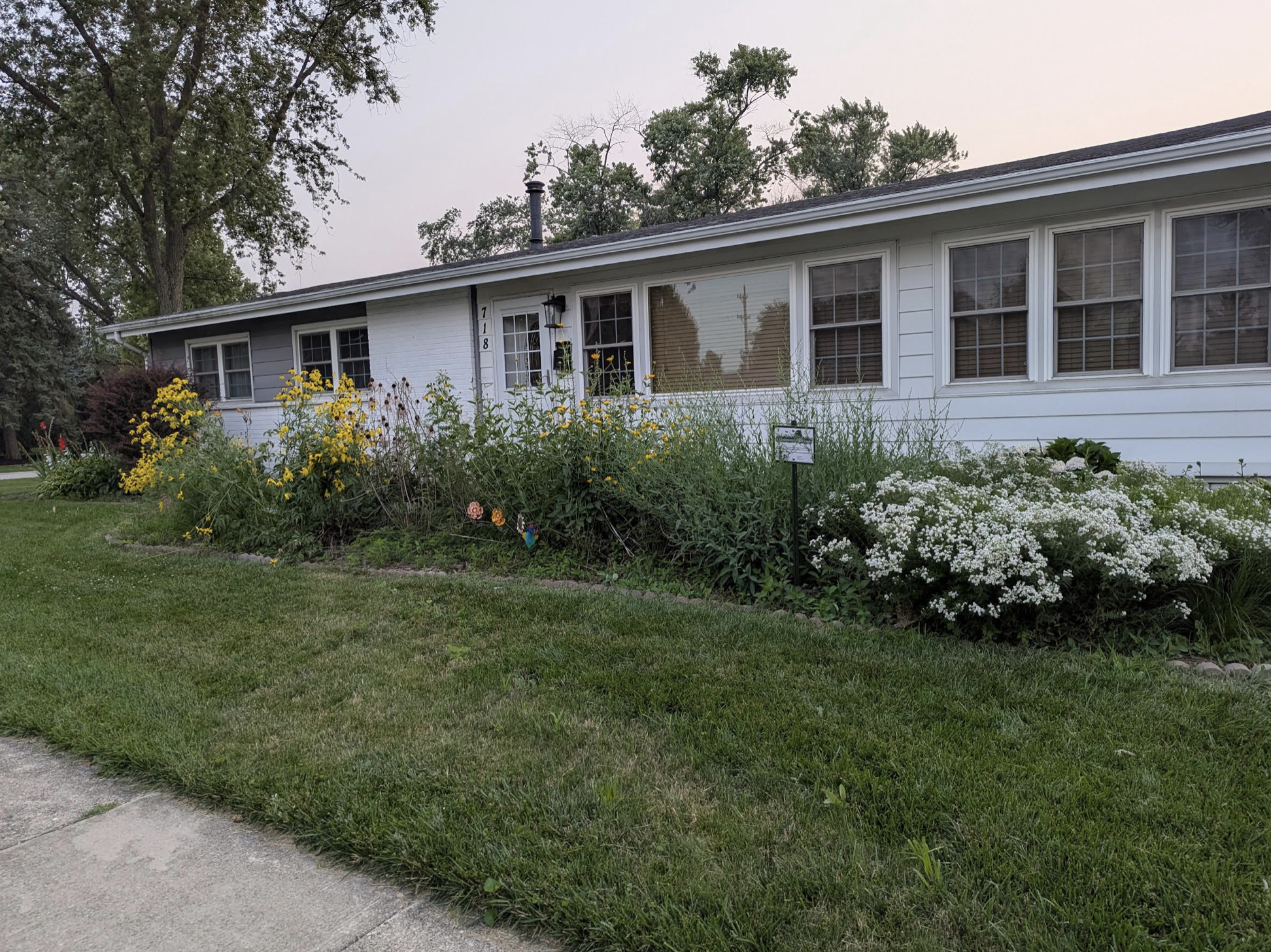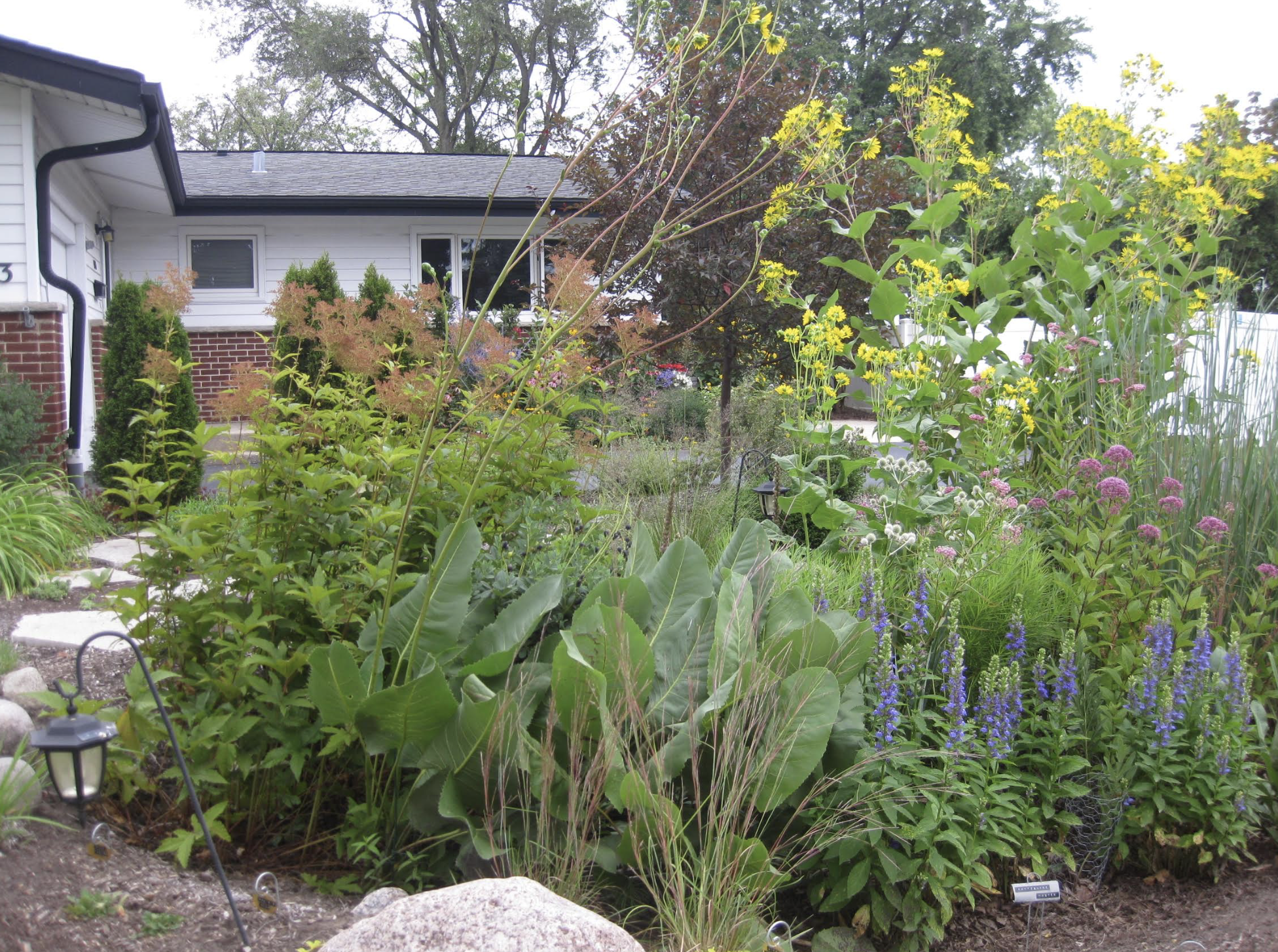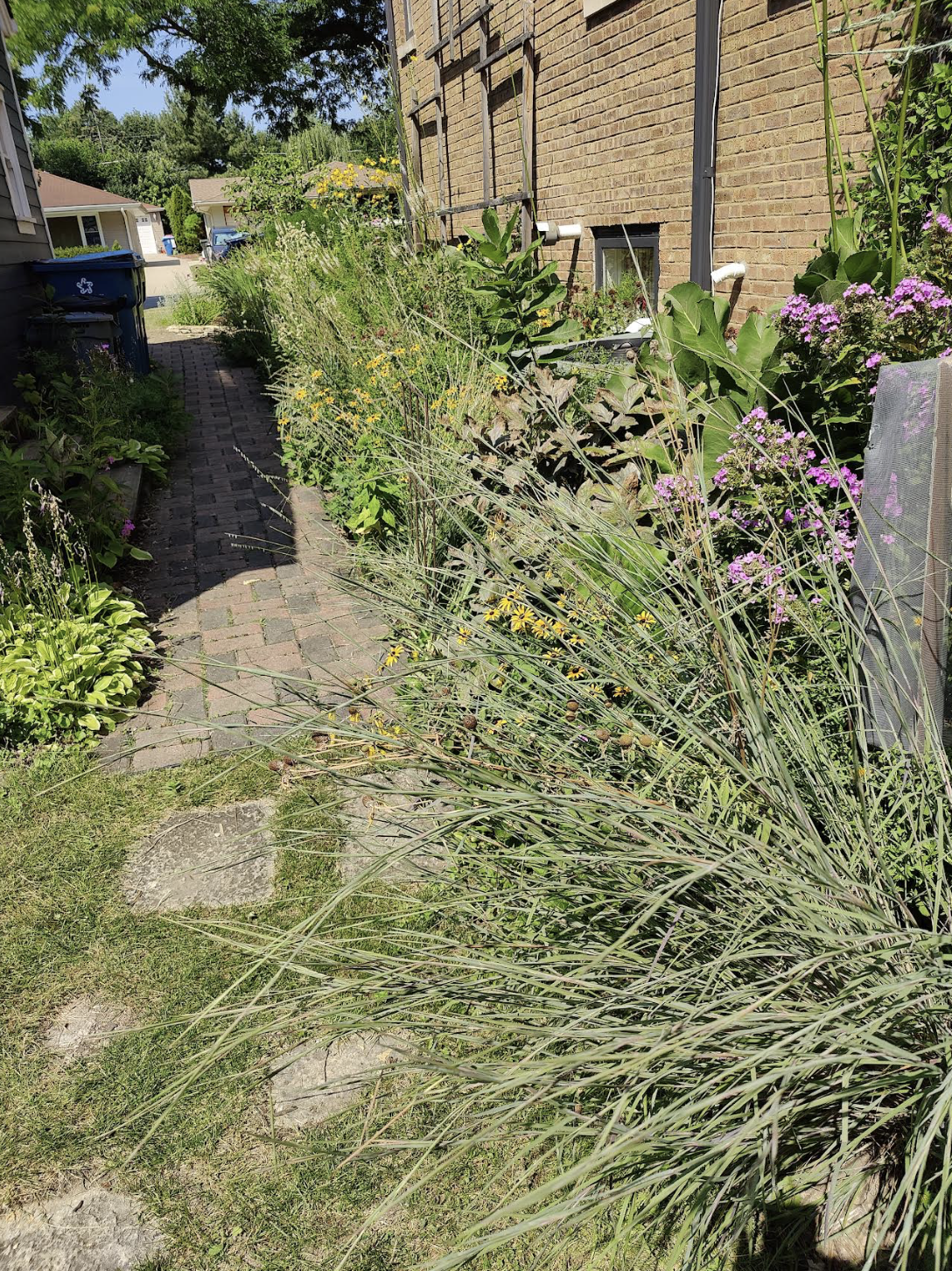
NATIVE & SUSTAINABLE
Thank you for all the hosts and everyone that attend the first ever Native Garden Walk 2025.
Go Green Mount Prospect, each summer in August will highlight yards that are growing natives, managing storm water, composting, and much more.
Participants are encouraged to bike from yard to yard to see these gardens and participate in learning tables at each garden.
Interested in showcasing your garden in the following years? Drop us a message under the "Contact" page on this website!






